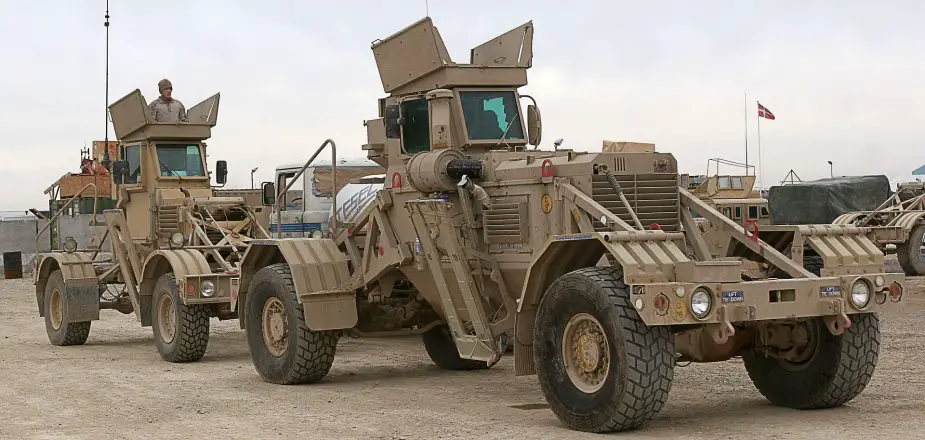Breaking news
U.S. Army awards contract for Husky Mounted Detection System kits.
Chemring Sensors and Electronic Systems Inc. were awarded a $200,218,380 modification to contract W909MY-18-D-0014 to develop, integrate and produce and deliver Husky Mounted Detection System kits, spare parts, maintenance and training.
Follow Army Recognition on Google News at this link

U.S. Huskies in Afghanistan (Picture source: U.S. Marine Corps)
Bids were solicited via the internet with one received. Work locations and funding will be determined with each order, with an estimated completion date of August 15, 2022. U.S. Army Contracting Command, Aberdeen Proving Ground, Maryland, is the contracting activity.
The Husky VMMD (vehicle-mounted mine detection) family of vehicles are blast-survivable, mission-configurable wheeled platforms employed around the world by specialized route clearance teams operating in high-explosive threat areas. Defined by their unique design characteristics of survivability, frangibility, and reparability, Husky vehicles enable personnel and payloads to safely operate in close proximity to sub-surface explosive hazards.
The Husky is manufactured in South Africa by DCD Protected Mobility and then integrated with clearance payloads, provided, and supported by U.S.-based C-IED solutions company, Critical Solutions International. It traces its lineage back to the Rhodesian mine detection vehicle, Pookie. Originally used as the lead element of a mine removal convoy, the Husky was employed as part of the Chubby mine detection system. The early Chubby system comprised a lead detection vehicle (the Meerkat), a second proofing vehicle (the Husky) towing a mine-detonation trailer, and a third vehicle carrying spare parts for expedient blast repair.
The Husky was initially deployed in the 1970s and used extensively by the South African Defence Force to clear military convoy routes of mines in Namibia and Angola during the South African Border War and it was during these first vehicle deployments that much of the early V-hull and Mine-Resistant Ambush Protected (MRAP) technology evolved.
In the mid-90s, CSI partnered with DCD to bring the technology to the US and would later successfully navigate a two-year foreign comparative test (FCT) program with the US DoD as well as follow-on modifications and testing. In 1997, in an announcement given by US President Clinton, CSI was directed to produce and deliver production systems under the US Army Interim Vehicle Mounted Mine Detection (IVMMD) Program. CSI, in collaboration with its manufacturing partner DCD, delivered the Vehicle Mounted Mine Detection (VMMD) systems to the United States for incorporation with U.S. managed technologies.
Over the next twenty years, the Husky went through a number of iterations and upgrades to evolve into the modern Husky Mk III and Husky 2G currently offered by CSI. Today, U.S. clearance units employ Husky vehicles as their primary detection assets and lead clearance vehicles.


























